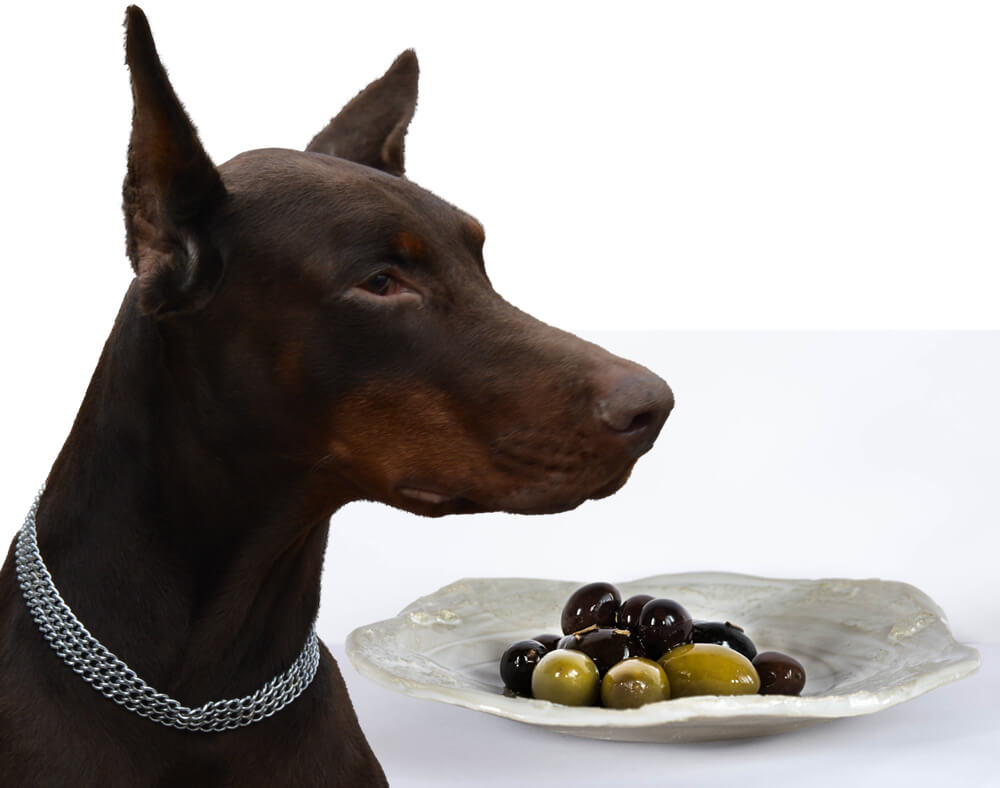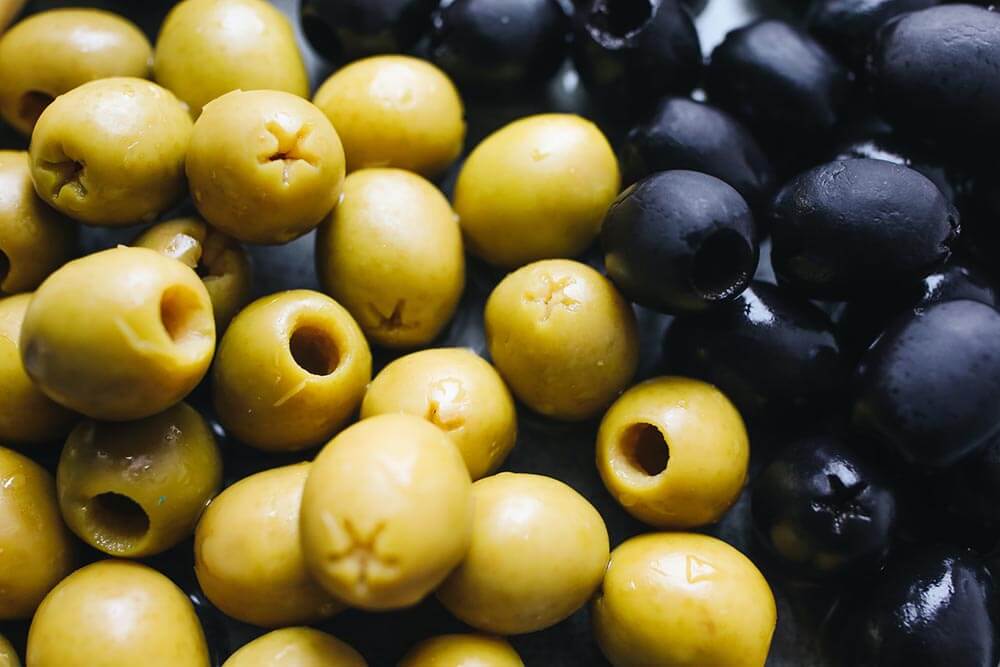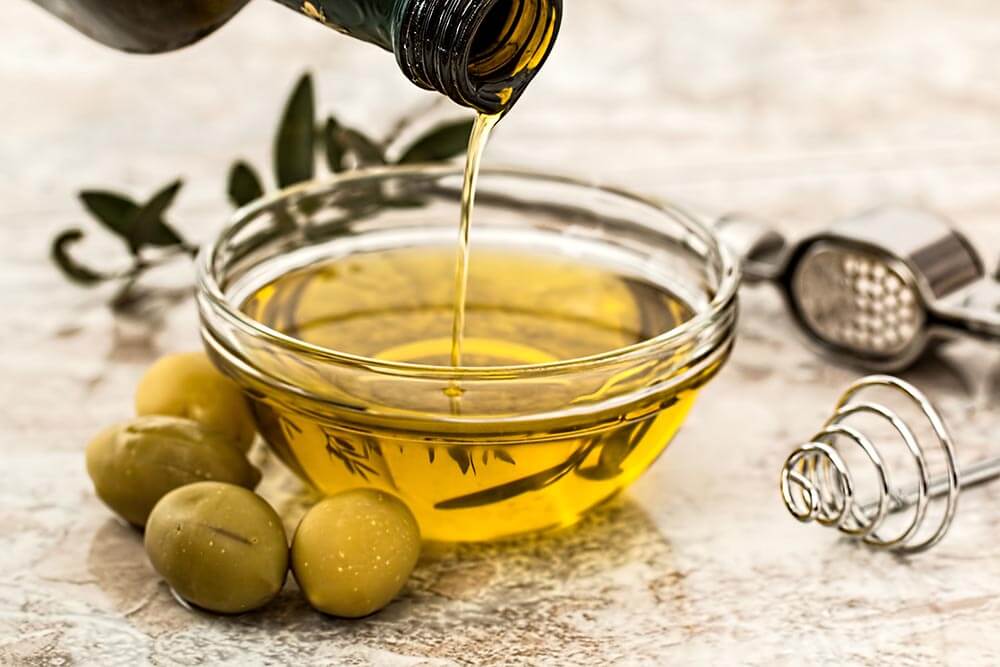While dogs love consuming meat more than any type of food, they can eat the occasional fruit.
So the answer to the above question is yes, dogs can eat olives. Unlike grapes, olives aren’t toxic to dogs. Your pooch may even enjoy them!
The key is moderation. Eating this Mediterranean delicacy in small quantities can be a canine health booster. Eating too many can be dangerous.

So, how many olives should your dog eat per week? And what nutrients can your pet derive from it? Read on to find out!
All about olives
Olives are the fruit of a small tree also known as “olive.” This tree species is common in the Mediterranean, which is why Mediterranean cuisine contains a generous amount of the fruit. Small wonder pizzas and olives make such a great pairing!
Olives are rich in nutrients and are among the healthiest foods a human can eat. Good thing dogs can eat olives, too!

Olives: the nutritional benefits
Olives contain the following nutrients:
Fat
Olives are high in oleic acid, a type of healthy fat known as monounsaturated fat.
Monounsaturated fat can help lower cholesterol levels as well as develop and maintain the cells in an organism’s body. For these reasons, eating olives can help decrease inflammation, reduce the risk of stroke and heart disease, and protect the body from cancer.
Vitamins
If your dog eats olives, they ingest plenty of vitamin E – a nutrient associated with many benefits.
Vitamin E protects your dog against oxidative stress, which can damage everything from cells to DNA. Oxidative stress contributes to tissue damage and premature aging.
In addition, vitamin E is also good for your dog’s skin, muscles, heart, liver, and immune system. It can even make their coat glossier!
Minerals
When dogs eat olives, they absorb essential minerals into their bodies.
Olives are rich in calcium, which dogs need for strong bones and teeth. Calcium also assists in muscle growth, blood coagulation, and nervous system function.
Sodium helps the muscles, heart, and nervous system function properly. It maintains the fluidic balance of the cells, as well.
Thanks to iron, red blood cells can carry oxygen to various tissues in the dog’s body. Iron also helps in the production of energy.
Copper helps in cardiac and immune function; the growth and maintenance of bones; and the development of connective tissue, among many other benefits.
Antioxidants
Feeding dogs olives allows them to enjoy the health benefits provided by antioxidants.
The antioxidants in olives enhance a dog’s protection against toxins, which is crucial given our canine friends are exposed to toxins more regularly.
These antioxidants boost the immune system’s ability to fight off infections. They also prevent free radicals from causing cellular damage, in turn helping ward off serious issues such as heart disease and cancer.

The dangers of eating too many olives
A dog that’s fed a well-balanced, nutritious diet is already enjoying the benefits of all the above nutrients. Feeding olives to such a dog may therefore provide them with an unnecessary excess of said nutrients. This is why you shouldn’t feed a dog a surplus of this fruit.
A dog that eats too many olives can experience the following problems:
Obesity
If absorbed in excess, even healthy fats can cause weight gain. So if your dog eats olives frequently, they may become obese.
Obesity is associated with many health problems, including heart disease, diabetes, and arthritis. And because an extremely heavy dog finds even the lightest physical activities challenging, they’re less likely to join others in play. The resulting lack of physical and mental stimulation can lead to boredom, extra weight gain, and a host of other issues.
In general, obesity harms a dog’s quality of life and shortens their lifespan. Let’s keep our pets healthy; don’t feed dogs olives in abundance.
Gastrointestinal problems
Olive pits (a.k.a. seeds or stones) can get stuck in your dog’s digestive tract. They can choke your dog, block their airways, or even cause an intestinal obstruction resulting in diarrhea, vomiting, and stomach pain. These problems, if not treated immediately, can be fatal for small-breed dogs.
Then there’s vitamin E. While consuming too much vitamin E rarely causes problems in dogs, an unfortunate pooch could experience gastrointestinal issues.
Dental issues
Dogs love to chew on things. Unfortunately, olive pits are hard enough that they can damage your dog’s teeth.
Problems caused by processed olives
Processing can transform an olive into a fruit your dog can occasionally eat into a fruit they should avoid as much as possible.
For instance, pickled and canned olives usually contain a surplus of sodium or salt. Ingesting too much of these can dehydrate or even poison your dog.
Other processed olives are soaked in oil, which can hurt a dog’s sensitive digestive system.

Practice safety when feeding dogs olives
If you’re going to feed your dog olives, make sure to do it the right way.
Serving size
There’s no hard-and-fast rule regarding the number of olives a dog should eat per week. But as it’s better to err on the side of caution, we recommend feeding your dog 1 or 2 olives 1 or 2 times a week.
Plain or processed?
Plain olives are ideal for dogs as they don’t contain a dangerous excess of substances that can harm them.
Stay away from olives that have been seasoned with salt or spices. Olives that have been soaked in a mixture of harmful ingredients should be avoided as well. Some mixtures contain onions or garlic, which are toxic to dogs.
For the same reason, don’t give your dog any olive-containing dish that also has a lot of salt, spices, oil, and any other seasoning or ingredient that’s bad for them.
Pitted or non-pitted?
While eating pitted olives in moderation shouldn’t pose any problems, you can remove the olives’ pits before feeding them to your pet to guarantee their absolute safety.
Black or green?
Olives grow darker as they ripen. Black olives are therefore olives that are harvested once they are fully ripe, whereas green olives are olives that are harvested before they can ripen.
Green olives have slightly more sodium, so if you have to choose between the two, go for black.
Can dogs eat Kalamata olives?
Yes, but only in moderation. Like green olives, Kalamata olives are slightly higher in sodium content than black olives.
Can dogs eat stuffed olives?
It depends on the stuffing.
Olives stuffed with pimento peppers or goat cheese are fine in moderation. Take note, however, that some dogs have difficulty digesting goat cheese.
Olives stuffed with hot peppers, chili, blue cheese, almonds, or garlic are best avoided. Hot peppers and chili can cause mouth and throat irritation as well as digestive problems. The fungus in blue cheese can lead to fever, seizures, diarrhea, and vomiting. Almonds, while not toxic to dogs, can result in digestive issues. Garlic is toxic to dogs and can also cause anemia and gastrointestinal problems.
Can dogs eat expired olives?
Absolutely not! Any olive beyond its expiration date can make your dog sick, especially if it has mold. Moldy olives can contain tremorgenic mycotoxins, which are toxic to dogs.
Tremorgenic mycotoxin intoxication can result in diarrhea, vomiting, muscle tremors, seizures, loss of muscle coordination (ataxia), extreme sensitivity to physical stimuli (hyperesthesia), abnormal increases in body temperature (hyperthermia), and involuntary rhythmic eye motions (nystagmus).
Can dogs have olive oil?
Because olive oil lacks pits and contains less sodium, it’s safer for dogs to eat than the fruit itself. Extra virgin olive oil is preferred as it is lower in acid content.
However, as olive oil still contains fat, feed it to your dog in moderation only. Don’t feed them olive oil every day – once a week should suffice.
For small dogs, consider mixing a teaspoon of oil into their meal. For larger dogs, a tablespoon of olive oil should do.
Don’t give olive oil to a pooch with pancreatitis, as it can worsen the disease’s symptoms.

Introducing olives to your dog
When giving your dog a treat they’ve never had before, don’t give them too much too quickly.
The introductory serving size should be smaller than the recommended size – so consider only giving half an olive to a dog that’s never eaten olives. See if your dog likes it. More importantly, observe your dog for any digestive distress such as diarrhea.
If your dog enjoys the treat, wait a few days, then give them a slightly larger portion of olive. Continue doing this for a week or more so your pet gets used to the new food. Once you’re confident olives don’t make your dog sick, you can start giving 1 to 2 olives once or twice a week.
Should olives give your dog any problems, contact a vet immediately.
Final thoughts…
Yes, dogs can eat olives and enjoy the many benefits these fruits provide. So use this Mediterranean delicacy as an occasional treat, consider removing those pits, and maybe mix olive oil into your pet’s meal now and then – your dog’s health will be all the better for it!
